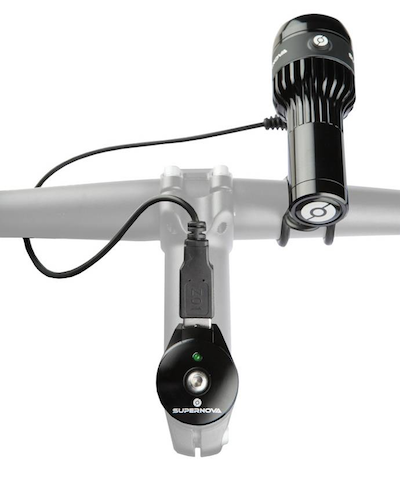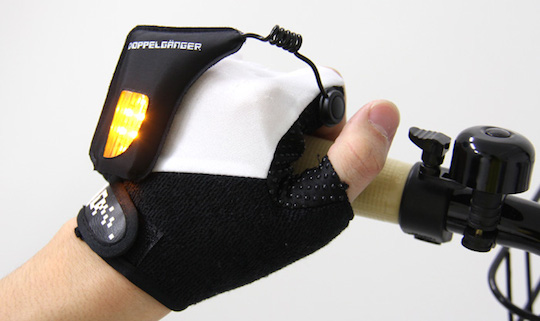Original URL: https://www.theregister.com/2014/06/30/saddle_up_for_the_tour_de_firmware/
Saddle up for the Tour de Firmware
Build a BONKERS BICYCLE laden down with gadgetry
Posted in Personal Tech, 30th June 2014 07:32 GMT
Lots of techies ride bicycles and it is not hard to see why: both pursuits involve the creation of heavily customised and finely-tuned machines coaxed to peak performance after arcane preparations and exhaustive effort, often at odd hours of the day or night.
The overlap looks even more likely of late, because bikes now pack in plenty more technology. Building plenty of it into a bike won't necessarily help you over the 3,664km of this year's Tour de France, which kicks off in Yorkshire this weekend, but will give you the chance to indulge in an unusual build.
One bit of kit you'll find built into some bikes these days is an electronic gear-shifting system. This kit isn't the equivalent of an automatic transmission. Instead they offer small motors to shift gears in ways said to be more precise than is possible with cables.
Such contraptions have been around for decades but went mainstream a few years back when colossal bike brand Shimano introduced the Di2 for its high-end Dura Ace range. The company has since reduced the price to around $2,000 or $3,000, a level at which serious hobbyists can consider the Di2. Those with a passion for things European and more cash to spare may prefer Italian firm Campagnolo's EPS system. Campagnolo is a venerable brand that can proudly point to the fact that NASA once asked it to machine some components, a pedigree that may appeal.
Whatever you buy, it has upgradeable firmware so you sysadmin skills can be put to work improving a bike's performance.
Electronic shifters rely on a USB-rechargeable battery. There are plenty of bike-mountable batteries out there, and plenty of smartphone mounts too. But when one is on the road it is ideal to bring a power source along for the ride.
Enter The Plug, a USB outlet that replaces the headset cap (the bit that holds the handlebars to the forks). Cunning wiring inside a bike's frame can pipe electricity generated by a dynamo into The Plug, and from there into your smartphone or the plethora of USB-rechargeable lights on the market.

The Plug III bicycle USB outlet
While we're on USB-rechargeable lights, it's worth mentioning Fly 6, a USB-rechargeable rear-light-and-camera-in-one. Plenty of cyclists carry front-facing cameras to gather evidence of a fun ride, or a dodgy driver. Fly 6 offers the same chance to shoot a ride, albeit facing backwards.
Snot patches
Now for a piece of data that may upset non-cyclists: lots of bicycle gloves come with a small, furry, patch that is designed to be nicely absorbent so riders can wipe drippy noses on it.
The Doppleganger light puts that patch to more hygienic use, by attaching to a glove with velcro. There's also a small switch designed to sit between thumb and forefinger to turn the light on and off, in the expectation you'll use it as a turn indicator light.

Turning left and dripping bogeys
For something a little classier Helios handlebars include indicator lights and a small GPS unit that, when you equip it with a SIM and send it a TXT, will send another message in return to let you know your bike's location.
If you get serious, all sorts of technological delights await. A couple of years ago bike gadgets like cadence sensors and power meters would have used the ANT standard. These days Bluetooth is making big inroads, so you'll need to get your head around the two and whether the bike computer and heart rate monitor of your dreams speaks either, or both, plays nicely with others or locks you in to one vendor's ecosystem.
Those in cold climes may even find themselves considering virtual trainers that portray roads on a television or other device, the better to make hours of indoor training tolerable.
The cloud also comes into things, because these days lots of cyclists rely on cloud services to record their rides. Apps like Strava rely on the cloud to connect riders, by allowing the creation of ““segments”, sections of road or path on which users can compete.
For an example, consider the “Cardigan Crunch” , a stretch of road on your correspondent’s ride to work. At the time of writing, I’m the fourth-fastest male rider on this segment. Should I take the crown, I’ll be informed of the fact, leader boards will update, my Strava “followers” (think Facebook friends) will all be told of my achievement and my profile will forever record my feat. Then my clubmates will try to knock me off, I’ll fight back, and we’ll all know about it thanks to the app’s email stream. Segments are everywhere, meaning cyclists now have incentive to speed up at various moments. That’s made for some trouble and legal action after crashes and injuries experienced chasing titles. It’s also made lots of reasons for friendly competition.
Here we are about 800 words in and we still haven't mentioned a bike! Carbon fibre has lots of fans, but a custom titanium frame has more technical cred inasmuch as lots of folks prefer to weld the metal inside a sealed chamber filled with inert gases. Let's assume a titanium frame and carbon wheels, plus electronic Capagnolo kit, a combination that will get almost any rider jealous.
We could go on but you get the idea: between electronic components and accessories, you could build yourself a technology-infused bike that would make getting up any hill a little easier and instil the sense of pride that comes with finishing a well-coded app or stable data centre rig. ®